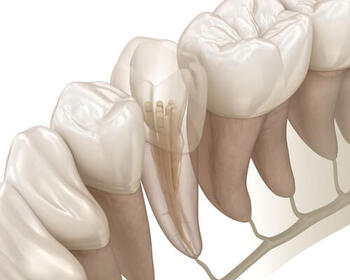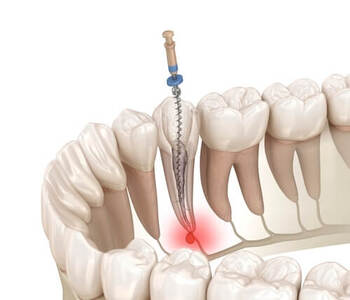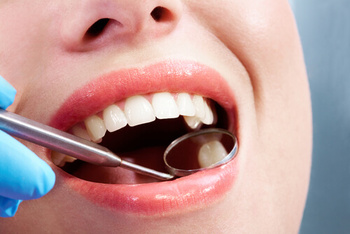
- Harris Dental Boutique
- root canal risks, root canal therapy, root canal treatment
- General Dentistry
A root canal procedure is a familiar part of dental care, recommended in many situations involving the health of a tooth. While many people feel anxious at the thought of undergoing this treatment, modern techniques have made it more comfortable and effective than ever. If you have been told you need a root canal, knowing what to anticipate can ease worries and help you feel prepared. This guide explains the steps involved, the benefits of treatment, how to care for your tooth afterwards, and what factors can affect cost. By the end, you will understand how a root canal can protect your natural tooth and maintain your oral health.
What Is a Root Canal?
Root canal treatment involves eliminating diseased or damaged pulp from the tooth’s interior as part of an endodontic approach. The tooth pulp, made up of blood vessels, connective tissue, and nerves, is housed in the pulp chamber and canals inside the tooth. This dental procedure clears the diseased dental pulp to prevent further infection while preserving the tooth’s structure.
Inside the Root Canal Procedure Step by Step for Peace of Mind

Preparation and Numbing of the Tooth
Before the dentist begins the root canal procedure, a local anaesthetic is administered to numb the affected tooth and surrounding tissues. This step ensures that the treatment feels comfortable, even if the tooth hurts beforehand due to infection or inflammation. Once the tooth is numb, a dental dam is secured to surround it, helping to isolate the area and keep it free of moisture. This protective barrier prevents saliva from entering the treatment site.
Gaining Access and Cleaning the Canals
The dentist carefully drills a small opening in the chewing surface of the tooth to gain access to the pulp chamber. Through this opening, they remove the damaged or infected pulp using fine dental instruments. The hollow centre of the tooth is cleaned thoroughly, clearing out bacteria and decayed tissue from the canals inside the tooth. The cleaning process also shapes the canals to prepare them for filling.
Filling the Cleaned Canals
The dentist fills the hollow canals with a substance called gutta percha once they have been properly cleaned and shaped. This biocompatible material seals the tooth’s root canal to prevent bacteria from re-entering. A temporary filling is then placed on top of the treated tooth to shield it while waiting for further treatment. In most cases, a permanent restoration will be needed to complete the procedure.
Restoring the Treated Tooth
After a few weeks, you will return for the final step, where the dentist replaces the temporary filling with a permanent restoration. To shield and strengthen the treated tooth, a crown is usually placed on top following the completion of the procedure. The crown also restores the tooth’s function and appearance, allowing it to blend naturally with the other teeth. Completing this restoration is crucial to avoid further infection and maintain the tooth’s integrity.
Monitoring Healing After Treatment
Following the procedure, the dentist may schedule follow-up appointments to ensure healing progresses well. X-rays may be taken to check that the bone and soft tissue around the tooth are responding properly. With proper care, the treated tooth can function like a real tooth for many years without issue.
Why a Root Canal Could Be the Right Choice to Save Your Smile?
Preserving the Natural Tooth
One of the greatest benefits of a root canal treatment is the ability to preserve your natural tooth. Instead of needing the tooth removed, the procedure saves the tooth’s root, maintaining stability in the jaw. Preserving the tooth helps prevent shifting of the other teeth, which could otherwise lead to bite issues or misalignment over time.
Preventing Further Infection
By removing the damaged dental pulp and sealing the canals, the procedure stops the spread of bacteria. This prevents further infection from reaching the surrounding bone or soft tissue, protecting nearby teeth from becoming affected. A treated tooth no longer harbours infection, reducing the risk of complications that could develop if left untreated.
Relieving Severe Pain
Many patients seek a root canal procedure because of severe pain caused by an infected tooth. Once the damaged tissue is removed and the infection cleared, the pressure inside the tooth is relieved. This treatment not only eliminates discomfort but also restores the ability to chew without sensitivity.
Avoiding Tooth Loss
Choosing a root canal allows you to avoid tooth loss that would otherwise occur if an infected or damaged tooth is extracted. Keeping the natural tooth in place preserves the strength of your bite and prevents the need for an artificial tooth or bridge. Retaining your own tooth provides better function and helps maintain the shape of your face over time.
Supporting Long-Term Oral Health
A successful root canal supports good oral hygiene and long-term oral health by removing diseased tissue while preserving tooth structure. This treatment allows you to continue practising good oral hygiene habits without gaps in your smile or the need for further dental work. Protecting the treated tooth also reduces the likelihood of bone loss in the jaw, helping maintain stability.
How to Look After Your Tooth After a Root Canal and Support Healing

Managing Discomfort After Treatment
It is normal to experience some tenderness around the treated tooth for a few days after the procedure. Over-the-counter pain relief can help manage mild discomfort as the tissues surrounding the tooth heal. Most patients find the discomfort gradually lessens within a few days, especially when avoiding chewing on the treated side initially.
Eating Soft Foods During Recovery
For the first few days after a root canal, eating soft foods can reduce pressure on the treated tooth. Foods like yoghurt, scrambled eggs, and smoothies are gentle choices that allow you to nourish your body without irritating sensitive tissue. Wait to eat hard foods until your dentist advises that your mouth has healed enough to handle your regular diet.
Maintaining Oral Hygiene Practices
Caring for your teeth with proper oral hygiene is key to preserving results and preventing problems after a root canal treatment.
Brush gently around the treated tooth and floss as usual, taking care not to disturb the temporary filling. Regular cleaning prevents new bacteria from entering the tooth and supports healing of the surrounding soft tissue.
What Really Impacts the Cost of a Root Canal and Why It Varies?
Location and Dental Clinic Fees
How much you pay for a root canal procedure can depend on the dental clinic’s location and its individual fee schedule. Urban clinics may charge higher fees compared to practices in regional areas. Prices can also reflect the experience of the general dentist performing the treatment and the technology used during the procedure. Some clinics may include additional amenities or specialised equipment that contribute to the overall cost. Patients should always ask for a detailed quote to understand what is covered in the treatment plan.
The Tooth’s Position in the Mouth
Teeth at the back of the mouth, like molars, typically have more canals inside and are harder to reach. Root canal treatment on chewing teeth may cost more because of the complexity involved. Front teeth usually have fewer canals, making the procedure simpler and less time-consuming. Treating molars may also require more advanced imaging or specialised instruments to navigate curved canals. The location of the tooth can impact both the time spent and the difficulty of completing the procedure successfully.
Severity of Tooth Damage
A badly damaged or decayed tooth may require more extensive cleaning, shaping, and restoration. Treating a tooth with deep decay or a complex infection can increase the time and resources needed, affecting the overall cost. Severe cases may also require additional visits to complete the treatment. The presence of cracks or fractures in the tooth can complicate the process and lead to higher expenses. In some instances, the dentist may need to reinforce the treated tooth with additional materials to ensure long-term stability.
Type of Restoration Needed
After a root canal, the treated tooth often requires a dental crown to protect it from future breakage. The type of crown selected, whether porcelain, ceramic, or metal, can influence the final cost. Some patients may also need an artificial tooth or other restorative options if the tooth cannot be fully saved. Custom crowns designed for aesthetic purposes may carry a higher price compared to standard crowns. Patients should discuss durability, appearance, and cost with their dentist when selecting a final restoration.
Additional Procedures or Imaging
In some cases, X-rays or other imaging are needed to assess the tooth’s root and surrounding bone. Additional procedures, such as replacing an existing filling or treating a tooth pulp infection that has spread, can increase costs. Your dentist will discuss any extra steps required as part of your personalised treatment plan. Re-treatment of a previously failed root canal may also add to the cost due to increased complexity. Special diagnostic tools like cone beam scans may be recommended for more detailed evaluation before proceeding.
Book Your Root Canal Consultation Today

A root canal procedure is a valuable treatment for saving an infected or damaged tooth while relieving severe pain and protecting oral health. By understanding the process, benefits, aftercare needs, and cost factors, you can make informed decisions about your dental care. Choosing this treatment allows you to preserve your natural tooth and avoid the complications of tooth loss.
If you think you may need a root canal or have been advised to consider this procedure, we invite you to contact our clinic for professional guidance. Acting early can prevent a root canal infection from spreading and reduce the risk of additional dental work. Our experienced team may recommend root canal treatment to help you avoid tooth removal and maintain oral function. Take the first step toward protecting your teeth and oral health by booking a consultation with us. Call us today on 07 4158 5813 to schedule your consultation and protect your smile with expert care.
Note: Any surgical or invasive procedure carries risks. Before proceeding, you should seek a second opinion from an appropriately qualified health practitioner.
References
https://www.healthline.com/health/root-canal
https://www.healthdirect.gov.au/root-canal-treatment





